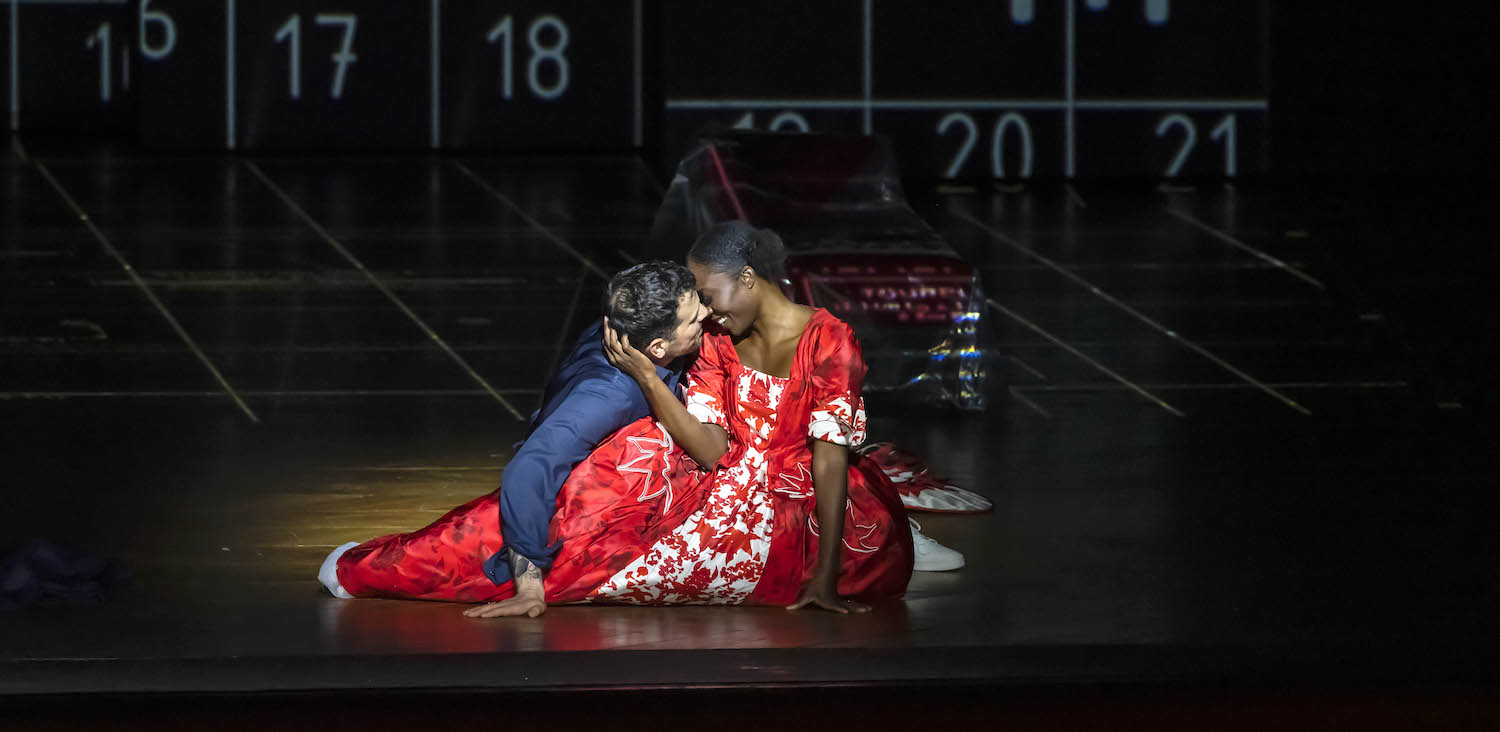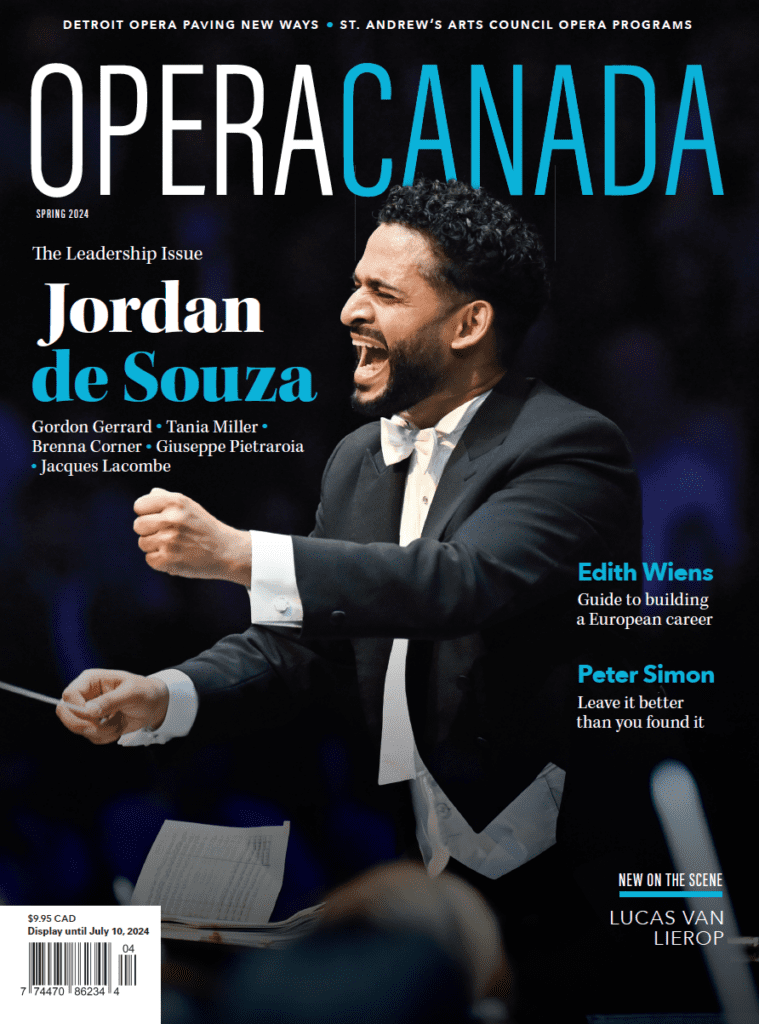Paris Opera‘s production of The Marriage of Figaro by English director and video artist Netia Jones is a true gem and loses none of its brilliance as new singing stars take on the different roles. The cast I heard for the final and sold-out performance on December 28 was exceptional, and almost all singers were new to me in these roles. I was nevertheless delighted to hear Luca Pisaroni once again as the very self-confident Figaro who, from his physical stature alone, lords it over the febrile Count. Being the only Italian on the stage, he has that extra edge, giving the exact inflection to each word; his recitatives are like speech and full of humor; his voice is even and rich throughout the range; in “Aprite un po’ quegli occhi,” the repeated B-flats and high E-flats are particularly vibrant. It was also a pleasure to hear the lovely Miah Persson again as the Countess, which she sings with elegance and touching sensitivity, and the American bass James Creswell who camps a good Bartolo despite his gauzy diction. The rest of the cast was a revelation: Trinidadian soprano Jeanine De Bique as an animated, joyful Susanna (I was fortunate to hear her in Rossini’s Moïse et Pharaon in Aix-en-Provence this summer, where she made the otherwise dull production come to life each time she stepped onto the stage); French mezzo-soprano Sophie Koch, a real luxury in the small role of Marcellina (it’s a shame that her “Il capro et la capretta” aria was cut); Israeli mezzo-soprano excellent as the amorous page Cherubino; Gerald Finley triumphs as a brooding, paranoid Count, simmering on the edge of fury or, on the contrary, in pathetic raptures over yet another prey; French tenor Éric Huchet plays Don Basilio to perfection with his beautiful tenor and clear diction; Ilhana Lobel-Torres is a touching Barbarina.
It struck me once again what a multitalented director Netia Jones is, maneuvering décor, costumes, and video and controlling all with unity and coherence. She plays the card of the theater within the theater, situating the “Folle journée” in the backstage of the Palais Garnier during rehearsals. Figaro is a prop and wigmaker; Susanna a costume designer. The Countess is a melodramatic opera star, while the Count is the haughty director of the theater. Bartolo seems to be the stage manager with his clipboard and pen; Marcellina a feisty union leader.
The director/Count abuses his power, prowling after young singers and ballerinas. A mimed sequence during the overture has him auditioning a young ballerina in his private office—no one can accuse Netia Jones of straying from the libretto here! The first appearance of the chorus is transformed into a demonstration with the unionists, led by Marcellina, gluing up posters against sexual harassment.
In Act III, a video casts a game of shadows in the background, taking us from the costume department to the women’s chorus dressing room, then to a dance studio where the “petits rats” (little rats, an affectionate term for Paris Opera ballet school dancers) are training. For the opening of act IV, one of them, Barberina, exits from the Count’s dressing room, her torn tutu leaving no doubt as to what she has just lost—”L’ho perduta,” poignantly sung by Lobel-Torres.
Though Gustavo Dudamel, who conducted the first run, brings added excitement and flamboyance to this score, Louis Langrée finds all the excitement we need within it, bringing out its melodies and inherent grace and nuance while bolstering the action on stage. There’s no doubt that Langrée, who now has the added responsibility of running the Opéra Comique, is still one of the best Mozart conductors of his generation.
It was an emotional and joyous final performance to end a less-than-joyous year; the Palais Garnier, packed to full capacity, was teeming with excitement and very reactive with applause.
In the final scene, the Countess doesn’t forgive the Count but instead gives him back a diamond ring and bracelet— thus the “mad day” and mad year were definitely over.
Related content ⬇
Opera Canada depends on the generous contributions of its supporters to bring readers outstanding, in-depth coverage of opera in Canada and beyond. Please consider subscribing or donating today.
PARIS OPERA
NOV 23 to DEC 28 2022
MOZART LE NOZZE DI FIGARO
CAST AND CREATIVE TEAMS
Conductor Louis Langrée
Stage director Netia Jones
Set designer Netia Jones
Video designer Netia Jones
Choreographer Sophie Laplane
Dramaturge Solène Souriau
Chorus master Alessandro Di Stefano
Costume designer Netia Jones
Lighting designer Lucy Carter
Collaboration in the staging Glen Sheppard
Figaro Luca Pisaroni
Susanna Jeanine De Bique
Il Conte di Almaviva Gerald Finley
La Contessa di Almaviva Miah Persson
Cherubino Rachel Frenkel
Bartolo James Creswell
Marcellina Sophie Koch
Basilio Eric Huchet
Barbarina Ilanah Lobel-Torres
Antonio Franck Leguérinel
Don Curzio Christophe Mortagne
Orchestre de l´Opéra national de Paris
Chœur de l’Opéra national de Paris






